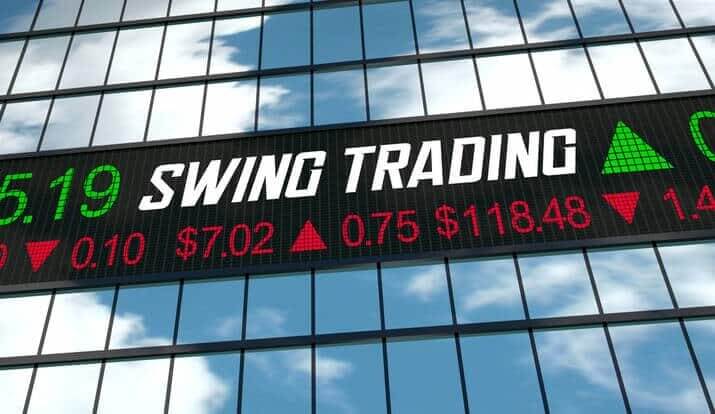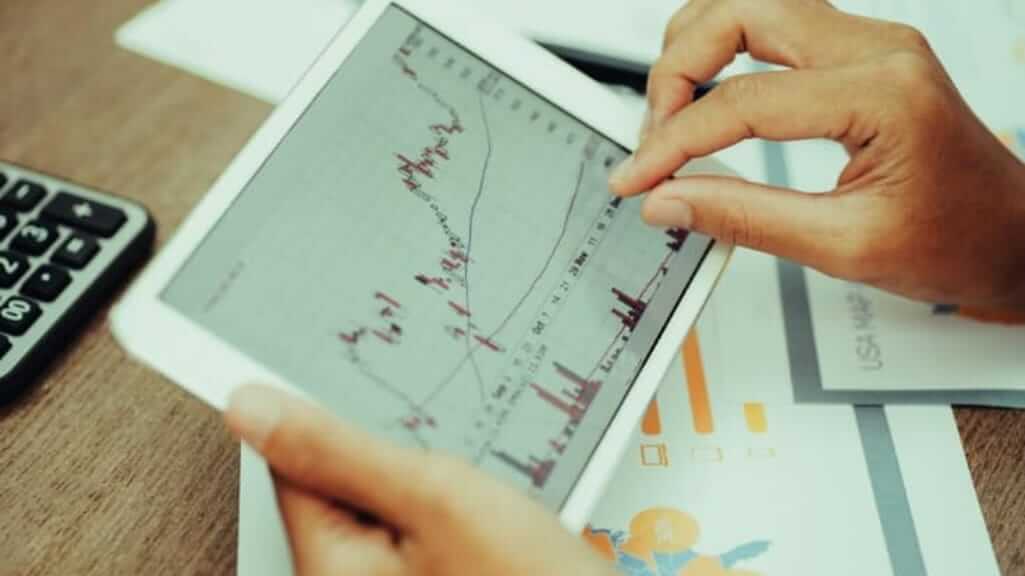
What Are Indicators For Swing Trading – Learn More About It
Have you ever thought about what swing trading indicators mean? Why is it important for every motivated trader to understand and use them most practically? And ultimately, how much knowledge of those indicators can directly affect the increase of profits in the long term?
Whether you have been engaged in Forex or stock trading for some time or are just planning to gain some relevant professional experience, you must understand the importance of choosing adequate swing trading strategies and everything that comes with them.
As someone involved in technical analysis, risk management, and moving averages, it is not surprising where the huge interest in indicators for swing trading strategy specifically comes from. Let’s first look at swing trading to explain better what we are talking about here.
What is swing trading exactly?
Swing trading represents a certain style of trading that tries to seize particular short and medium gains in any particular financial instrument. It does that within a certain period of a couple of days to weeks. Swing traders primarily utilize technical analysis to spot valuable trading opportunities.
Besides technical analysis, swing traders are also keenly aware of fundamental analysis that they utilize very often to analyze price patterns and trends. It’s essential to understand that a trader is exposed to weekend and overnight risks.
In this situation, the price is able to gap and open the next session at a considerably diverse price. Also, swing traders are able to earn their profits using a well-set:
- Profit target
- Risk/reward ratio.
While using them, they might expect either losses or profits that are established on:
- Price action movements
- A technical indicator.

What does swing trading include?
For those interested in knowing what a swing trade represents, swing trading usually includes sticking to one particular position that could be long or short. It includes holding these positions for at least one trading session.
However, the maximum is holding either a couple of weeks to months. We are discussing general time frames since some trades could last longer than months. However, there will always be traders who would consider swing trades. It’s also essential to note that swing trades may occur in one trading session, even though it’s rare.
The main goal of swing trading
The main goal of swing trading is to spot the huge potential of a particular price move. Even though some traders look for volatile stocks with huge movements, other traders choose sedate stocks or other assets more likely.
Anyways, swing trading refers to a particular process of asset’s price identification, where it will move next, and it will enter a position. Also, identification means capturing a block of the profit that that particular move occurs.
So, now that you’ve got the basics of swing trading, it’s time to learn more about indicators for swing trading. Let’s get acquainted with it, shall we?
What are swing trade indicators exactly?
Now that you’ve got all the crucial information about how swing trading functions, you’re also acquainted with the fact that traders always search for particular patterns and trends to identify opportunities in the market successfully.
The main goal is to achieve a certain position in a stock or Forex market that’s pulled back in price from the following:
- The longer-term trend
- longer-term uptrend.
Once one of these reasserts itself, it will exit before it trends back down. Nonetheless, the main question is how traders spot these valuable opportunities. The answer is: utilizing indicators for swing trading!
A swing trading indicator – definition and explanation

Indicators for swing trading are used by traders who want to make more informed decisions. The definition of a swing trading indicator is that it’s a mathematical model that enables traders to comprehend certain data and trends.
In addition, traders utilize swing trading indicators for predicting numerous aspects of an asset’s price. It predicts whether the price will increase or decrease or remain as it is. With the most prominent swing trading indicators, traders are able to make exact predictions about what a particular asset will do.
Knowing that a trader can signal whether a particular trend is bearish or bullish is useful. Also, it could state what the momentum behind that trend represents. It all assists them in identifying which stocks or assets they wish to trade, while they can easily identify the right:
- Trade entry point
- Trade exit point.
Traders are also able to place these indicators for swing trading over the stock’s chart. In addition to that, traders function on the following platforms:
- Daily charts
- Weekly charts
- Any particular chart a trader utilizes for market situation purposes.
Why should you learn to understand indicators for swing trading?
Unsurprisingly, these indicators hold significance, as your entire swing trading approach hinges on them. Even if you rely on stock prediction software that simplifies these basic indicators for you (more on that later), it’s crucial to comprehend the fundamentals.
A thorough understanding of these indicators will give you an advantage in identifying suitable stocks for your unique risk tolerance and trading style. Moreover, you’ll be able to determine the optimal time to enter and exit positions.
Timing is critical, and with a proper grasp of trend, momentum, and volume indicators, you can avoid entering or exiting positions too slowly. Therefore, let’s quickly examine the three distinct types of indicators.
Three different types of indicators for swing trading
There are three different types of swing trading indicators that any trader needs to keep in mind before anything. These are:
- Momentum indicators: It is crucial that traders utilize the momentum indicator for determining the strength of a brand. This indicator is particularly successful in predeterminign potential reversals. These indicators detect overbought or oversold conditions, such as the commonly used RSI (relative strength index).
- Volume indicators: They show how many swing traders are trading a stock, indicating the strength of a trend. High volume suggests strong trends, whereas low volume implies the opposite.
- Trend indicators: They reveal the market’s direction. Moving averages are the most prevalent type, and they assist in smoothing out fluctuations in price and identifying trends (if present).
What are the top indicators for swing trading?

Now that you know the three types of trading indicators and more about a swing trade, here are the top indicators for swing trading, shall we?
Moving average (MA)
The moving average (MA) is a top swing trading indicator that confirms price trends. As a lagging indicator, it’s not used to predict future price movement. There are two types to know: simple moving averages (SMA) and exponential moving averages (EMA), with EMA reflecting recent price action.
To use MAs, distinguish between short-term and long-term ones, and watch for a short-term MA crossing a long-term MA. This bullish signal may indicate a good time to buy.
Bollinger Bands
Bollinger Bands is a lagging indicator that evaluates momentum in a stock’s trend. It reveals the high or low price relative to past trades, indicating market volatility and whether a stock is overbought or oversold.
It’s a popular indicator among swing traders, relying on moving averages and two standard deviations (positive and negative) to determine volatility. As the gap widens, so does volatility, while convergence signals less volatility.
Stochastic Oscillator
The Stochastic Oscillator is a momentum indicator similar to the Relative Strength Index but with different mathematical models. It operates on a 0-100 scale, with overbought and oversold levels at 80 and 20.
Unlike the RSI, it uses two lines on a chart – the Stochastic Oscillator and a 3-day moving average. A reversal may be signaled when the two lines converge and cross.
MACD (Moving Average Convergence Divergence)
The MACD indicator combines the SMA and EMA to confirm trends and analyze momentum. It calculates the difference between the 26-period EMA and 12-period SMA, but these periods can be adjusted to fit your trading style and risk level.
You can use the MACD by overlaying it on a stock chart and watching it cross above or below the signal line to buy or sell, respectively. You can also use it to predict reversals by identifying the divergence between the histogram and price action.
Relative strength index (RSI)
The RSI is a momentum indicator that helps identify oversold or overbought stocks based on price change. It’s shown as an oscillator on a scale of 0-100, with higher numbers indicating overbought stocks and lower numbers indicating oversold ones.
This indicator is particularly useful in crypto trading. Keep an eye on it to make the right moves – if the RSI goes above 70, expect a reversal; if it drops below 30, expect a bearish trend to end.
Bullish candlestick reversal patterns
Bullish candlestick reversal patterns suggest a high chance of support holding and an advanced beginning. Examples include bullish engulfing, hammer, and morning star. Confirm their strength with volume indicators before entering a trade.
Volume
Volume is a crucial but often overlooked indicator that shows how much of a stock is being traded and confirms the strength of a trend. High volume indicates a strong trend, while weak volume indicates a weak trend.
Conclusion
Effectively using swing trading indicators is essential for profitable trades in the long run. Traders must employ them strategically to gain valuable insights into market trends and price fluctuations.
FAQ

What is swing trading?
Swing trading represents a certain style of trading that tries to seize particular short and medium gains in any particular financial instrument. It does that within a certain period of a couple of days to weeks. Swing traders primarily utilize technical analysis to spot valuable trading opportunities.
Besides technical analysis, swing traders are also keenly aware of fundamental analysis that they utilize very often to analyze price patterns and trends. It’s essential to understand that a trader is exposed to weekend and overnight risks.
What does swing trading include?
For those interested in knowing what a swing trade represents, swing trading usually includes sticking to one particular position that could be long or short. It includes holding these positions for at least one trading session.
What are swing trading indicators?
Indicators for swing trading are used by traders who want to make more informed decisions. The definition of a swing trading indicator is that it’s a mathematical model that enables traders to comprehend certain data and trends.
In addition, traders utilize swing trading indicators for predicting numerous aspects of an asset’s price. It predicts whether the price will increase or decrease or remain as it is. With the most prominent swing trading indicators, traders are able to make exact predictions about what a particular asset will do.
What are three different types of indicators for swing trading?
Three different types of swing trading indicators are:
- Momentum indicators
- Volume indicators
- Trend indicators.
What are top swing trading indicators?
Top trading indicators for swing trading are:
- Moving average (MA)
- Bollinger Bands
- Stochastic Oscillator
- MACD
- Relative strength index (RSI)
- Bullish candlestick reversal pattern
- Volume.
Why should you learn to understand indicators for swing trading?
Unsurprisingly, these indicators hold significance, as your entire swing trading approach hinges on them. Even if you rely on stock prediction software that simplifies these basic indicators for you (more on that later), it’s crucial to comprehend the fundamentals.




